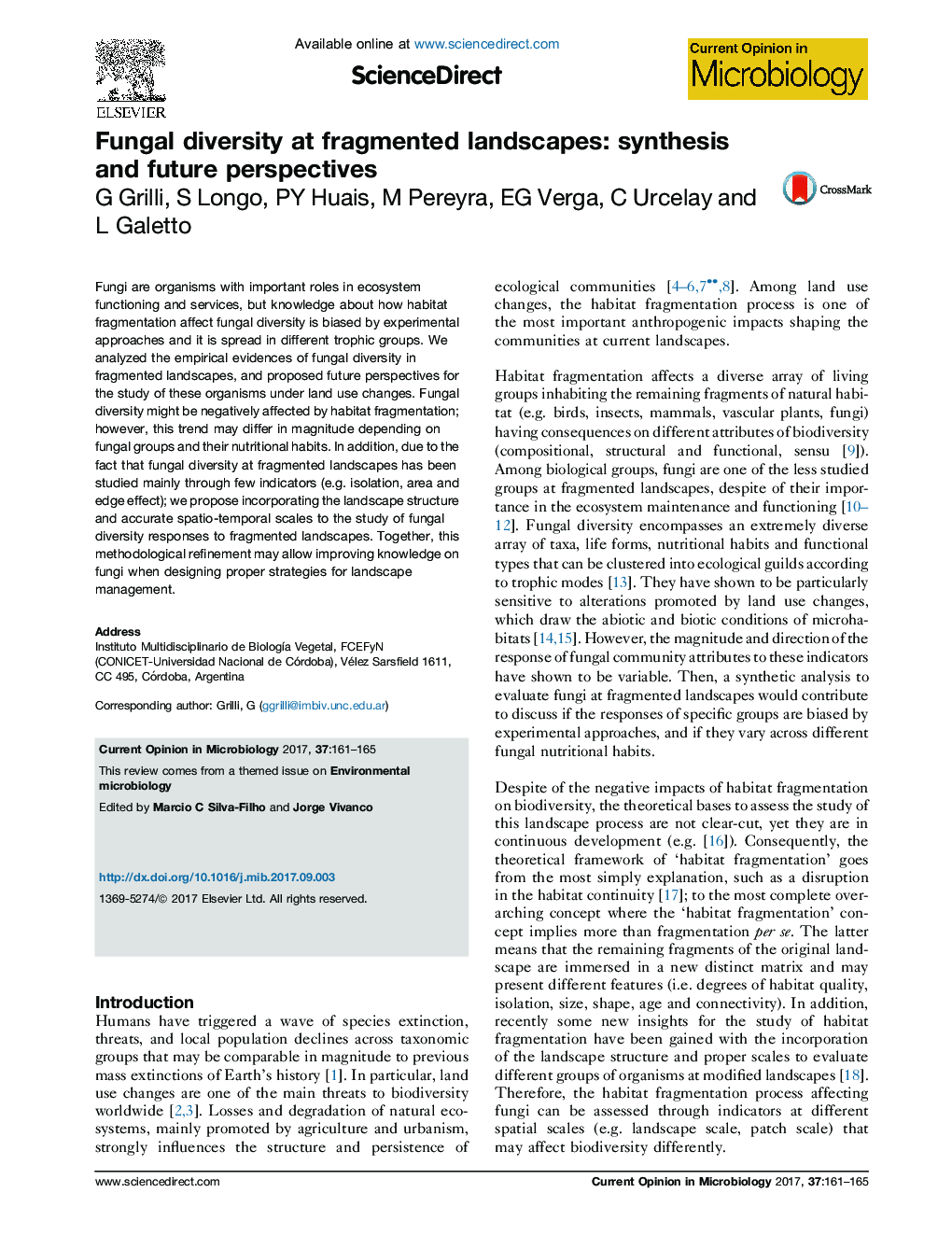| Article ID | Journal | Published Year | Pages | File Type |
|---|---|---|---|---|
| 5671729 | Current Opinion in Microbiology | 2017 | 5 Pages |
â¢Patch size, isolation and edge effect are the main indicators used in the literature.â¢Habitat fragmentation differentially affected fungal functional groups.â¢Landscape heterogeneity and multi-scale analysis should be considered.
Fungi are organisms with important roles in ecosystem functioning and services, but knowledge about how habitat fragmentation affect fungal diversity is biased by experimental approaches and it is spread in different trophic groups. We analyzed the empirical evidences of fungal diversity in fragmented landscapes, and proposed future perspectives for the study of these organisms under land use changes. Fungal diversity might be negatively affected by habitat fragmentation; however, this trend may differ in magnitude depending on fungal groups and their nutritional habits. In addition, due to the fact that fungal diversity at fragmented landscapes has been studied mainly through few indicators (e.g. isolation, area and edge effect); we propose incorporating the landscape structure and accurate spatio-temporal scales to the study of fungal diversity responses to fragmented landscapes. Together, this methodological refinement may allow improving knowledge on fungi when designing proper strategies for landscape management.
